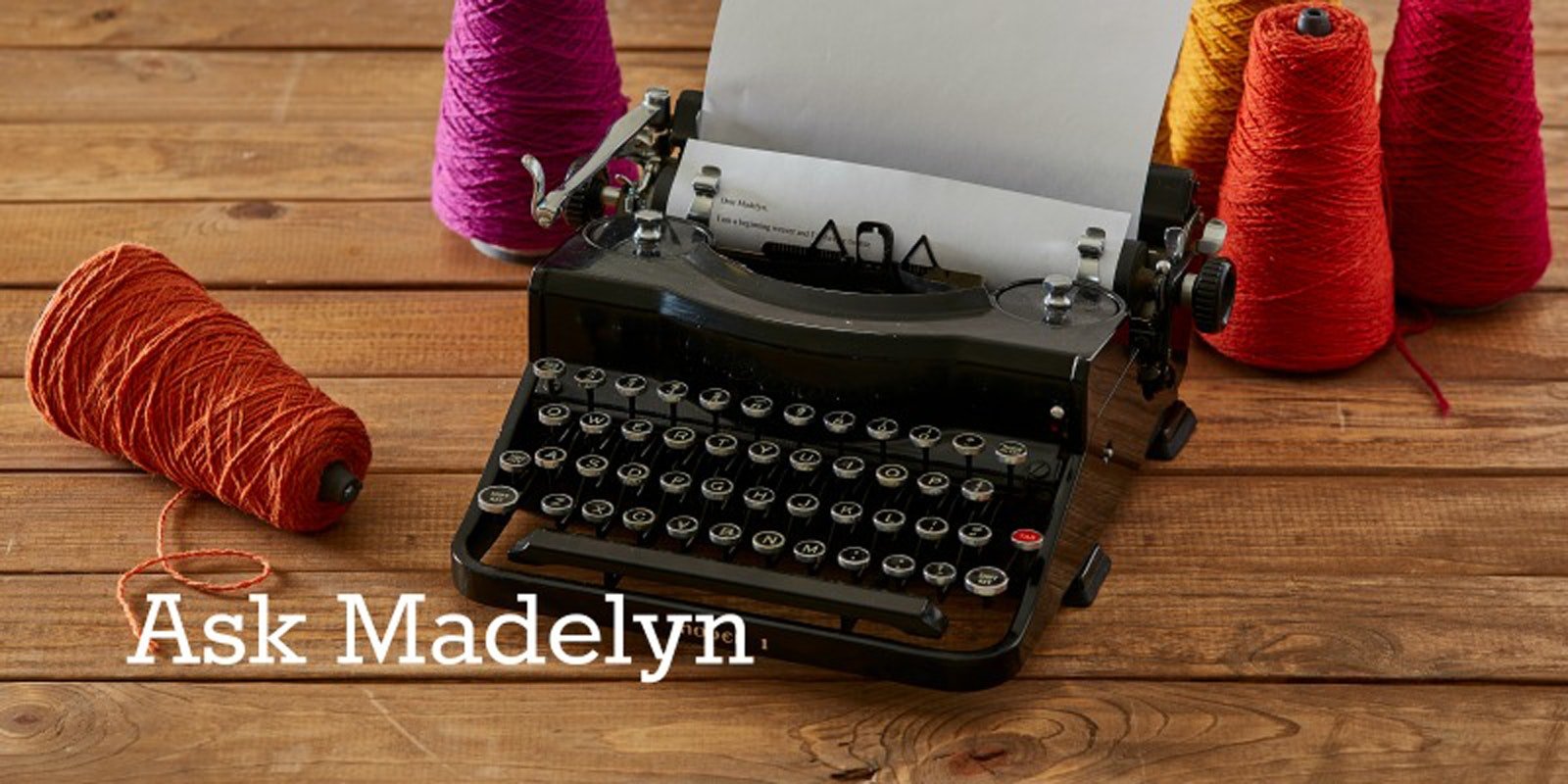Dear Madelyn,
I am a weaver with a lot of theoretical knowledge from years of reading, but very little practical experience with my new second-hand LeClerc 48-inch Nilart loom. I am primarily interested in rep weave, and recently completed my first rep project, three rugs for my kitchen. I'd like to explore the difference a change of materials makes, so hope to make a table runner in the same green and natural pattern, replacing the three strands of mop cotton with a single strand for the thick weft, and a lighter warp cotton than the 12/6 used for the rugs. Using the 12/6, I warped the loom at 30 epi and had no trouble with the shedding. If I drop the warp to something like an 8/2, do I need to double the warp sett to 60epi? I am concerned that such a dense sett will cause problems in shedding. The warp thread was also used for the thin weft. The original 12/6 at 30 epi almost, but not quite, covered the weft. The thick and thin weft were both natural in color, so the result was a slight softening of the graphic nature of the pattern.
I also wondered if anyone publishes a sett chart for various warp materials used in rep weave? I have seen several such charts for a balanced weave, but the sett would be much denser for rep.
—Virginia
Hi Virginia!
These are really good questions, and an experienced warp-rep weaver would be better equipped to answer them than I. 12/6 cotton is a very smooth, strong yarn. I can imagine that it would make shed formation pretty easy, even at the relatively close sett of 30 epi. However, it behaves like a cord. By that, I mean that the individual threads would show as individuals, leaving little gaps where the sheds change. You would like the warp yarn to flatten to be more ribbon like, so that you don't notice the individual threads.
I have looked through warp rep projects in the last 15 years of Handwoven. I see 3/2 cotton at 30 (rug, table runner); 8/4 cotton carpet warp at 24 (rug); 8/2 Tencel at 60 (table runner); 5/2 cotton at 40 (runner); 5/2 doubled at 24, 48 actual ends (hot pads); 5/2 doubled at 20, 40 actual (wall hanging); 10/2 doubled at 33, 66 actual (table runner); 10/2 at 48, 8/2 at 32 (pillows); and 10/2 doubled at 30, 60 actual (placemats). In "Getting Started with Warp Rep" (Tom Knisely, January/February 2006, page 56 and in his Master Weaver Collection), Tom suggests setting warp rep at the number of ends you'd wrap in an inch on a ruler (what you get is the way you want the warp to look as it completely covers the weft).
I like the idea of doubling 10/2 pearl cotton at 30–33 (doubled). The 2-ends tend to flatten a bit to cover well, and 10/2 is strong and smooth for good shed formation. The yarn and sett used most for warp rep rugs, however, in Handwoven projects is 3/2 pearl cotton at 30 epi. The issue with 8/2 (which I think I'd sett at 50 or doubled at 25) is that if it is unmercerized, it is likely to be sticky and resist shed formation. I'd choose 10/2 cotton over 8/2.
—Madelyn

